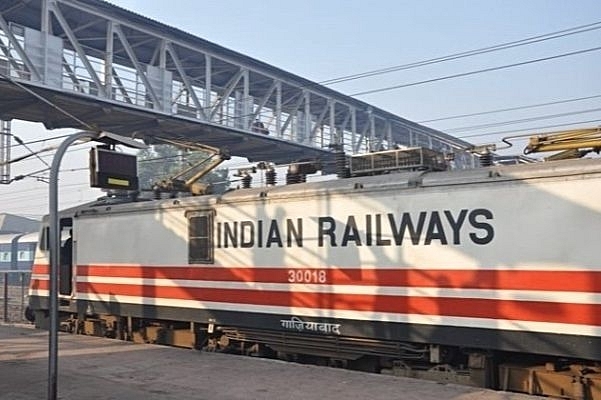News Brief
LTE-Based Spectrum To Boost Safety Of Railways' High Density Network
- The LTE-based mobile train radio communication will provide secure and reliable voice, video and data communication services for operational, safety and security application.

Indian Railways (Representative Image) (Pic Via PTI)
The Union government has allotted 5 MHz spectrum to Indian Railways for the development of an ultra high speed wireless corridor along the rail network to keep pace with growth in the country.
With this spectrum, the railways has envisaged to provide LTE (long term evolution) based mobile train radio communication on its routes. The purpose of the LTE is to provide secure and reliable voice, video and data communication services for operational, safety and security applications.
It will be used for modern signalling and train protection systems and ensure seamless communication between loco pilots, and guards, station masters and train traffic controllers.
It will also enable the remote monitoring of assets through the Internet of Things (IoT), especially of rolling stocks like coaches, wagons and locos. This will also enable the limited monitoring of CCTV cameras in train coaches. These features will strengthen the safety and security across the rail network, make the operations efficient, faster and reliable, and cater to the growing demand for more trains and stoppages across different parts of the country.
Railway radio communication systems between train and trackside (RSTT) provide improved railway traffic control, passenger safety and improved security for train operations. It carries train control, voice dispatching, command, operational information as well as monitoring data between on-board radio equipment and related radio infrastructure located along trackside.
Radio communication networks supporting RSTT are critical for train operations and have stringent requirements for reliability, availability, safety and security.
Presently, Indian Railways is using the outdated GSM-R of 2G version of mobile communication system over 3,000 route kilometres with only 1.6 MHz spectrum in 900 frequency band. This system will become obsolete by 2030.
GSM-R communication technology has its limitations while LTE offers many advantages in terms of capacity, capability and services. Moreover, LTE serves as the best alternative to counter the obsolescence of GSM-R. LTE is better suited for data communications, since it is a fully packet-switched-based network.
According to the railways, considering these aspects, it was decided to provide LTE based mobile train radio communication for which a suitable spectrum was needed.
In order to facilitate that government has approved the request of Ministry of Railways as per the recommendations of the Telecom Regulatory Authority of India (TRAI) and allotted 5 MHz (paired) spectrum in 700 MHz premium frequency band.
Accordingly, Indian Railways started working towards the modernisation of its signalling and Telecom systems. For modernisation of telecom system, the railways has evaluated the present system, future requirements and selection of technology.
It is expected to have an investment of more than Rs 25,000 crore in signalling and telecom development in next five years. Out of which, Rs 20,597 crore works have already approved by the government for high density network (HDN) and highly utilised network (HUN) over 34,304 route kilometres. HDN and HUN routes are around 50 per cent and carries 96 per cent of the total traffic. The project sanctioned will be completed in the next five years.
Economic benefits which the railways will derive from this project include improved safety and security in the running trains, reduction in number of accidents, fatalities and incidences.
Introducing ElectionsHQ + 50 Ground Reports Project
The 2024 elections might seem easy to guess, but there are some important questions that shouldn't be missed.
Do freebies still sway voters? Do people prioritise infrastructure when voting? How will Punjab vote?
The answers to these questions provide great insights into where we, as a country, are headed in the years to come.
Swarajya is starting a project with an aim to do 50 solid ground stories and a smart commentary service on WhatsApp, a one-of-a-kind. We'd love your support during this election season.
Click below to contribute.
Latest